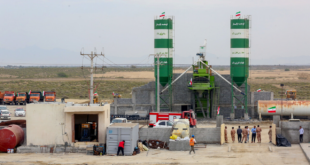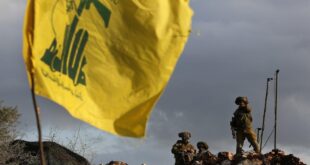Through its Yemeni proxy the Houthis, Iran can successfully target global supply chains, threatening freedom of navigation and maritime security with strikes in the Bab al-Mandab.
The multinational effort to thwart these disruptions, Operation Prosperity Guardian, has failed to establish credible deterrence in the Red Sea, as Houthi attacks on commercial vessels have led shipping companies to suspend their operations there.
Data and experience gleaned from the Houthis’ attacks allow Iran’s Revolutionary Guard Corps to hone its operations, while the presence of an Iranian spy vessel in the region presages an intensifying campaign.
To effectively safeguard maritime security and global trade, the United States and its allies should target the critical capabilities of the Houthi forces and deter Iran from escalation.
Identifying the Core Security Challenge
Since mid-November 2023, the Houthi militia, Iran’s proxy in Yemen, has launched a disruptive campaign against maritime traffic through the Bab al-Mandab, a critical chokepoint connecting the Red Sea to the Gulf of Aden and the Indian Ocean beyond. Houthi strikes have endangered traffic through the Suez Canal, so many leading shipping companies have suspended their activities in the region.
To address this worsening situation, in mid-December 2023, a US-led multinational coalition launched Operation Prosperity Guardian. Saudi Arabia and Egypt are notably absent from this coalition, with Bahrain the sole Gulf country currently supporting the effort.
Despite the naval buildup, Operation Prosperity Guardian has been unable to stop the Houthi attacks. Although Washington and London have pressed Tehran to rein in the Houthis, Iran has boldly turned down this diplomatic request, while the Houthi leadership has made menacing threats against US Navy assets in the region.
The failure to establish credible deterrence has emboldened Iran, and the Houthi threat is only growing.
Why It Matters
Houthi aggression marks the most serious threat to maritime shipping and trade in decades. Between seven to nine million barrels of oil navigate the Bab al-Mandab every day. The Suez Canal is also a major trade route, ensuring economic transactions among Asia, Europe, and North Africa. Altogether, about 12 percent of global maritime trade moves from the Bab al-Mandab to the Suez Canal every year, including some 30 percent of annual global container trade, worth around $1 trillion.
Already, Houthi attacks have caused major companies to halt their operations in the Red Sea. These companies shepherd a large portion of international maritime traffic, with the Maersk Group accounting for 19.7 percent, CMA CGM 18 percent, and Hapag Lloyd AG 8 percent of overall global shipping. Most of these multinationals have suspended their Red Sea operations and re-routed their northbound and southbound vessels, which has delayed estimated arrival times as container ships navigate longer routes around the Cape of Good Hope. The deteriorating security situation has triggered a rapid increase in insurance costs, placing an additional burden on maritime trade. The tense situation threatens global supply lines that are already struggling to recover from pandemic-era disruptions.
Unchecked, the Iran-backed Houthi aggression could catalyze catastrophic outcomes across multiple continents. In 2021, when the 1,300-foot Ever Given cargo vessel became stuck in the Suez Canal, an estimated $10 billion worth of cargo was lost every day. The situation unfolding in the Bab al-Mandab is more serious than that incident by several orders of magnitude.
Maintaining free maritime navigation is a geopolitical imperative for the United States and its allies. This strategic priority was highlighted in the 2022 US National Security Strategy, which stated that “the United States will not allow foreign or regional powers to jeopardize freedom of navigation through the Middle East’s waterways, including the Strait of Hormuz and the Bab al-Mandab.” The North Atlantic Treaty Organization’s Strategic Concept further declares that member nations will deter and defend against all threats in the maritime domain, uphold freedom of navigation, secure maritime trade routes, and protect main lines of communication.
Houthi information operations suggest that the militia, in coordination with Iran, has intentionally positioned itself as the most active and dangerous member of the so-called Axis of Resistance. The militia’s rhetoric has recently ranged from threatening Israel to openly challenging the US military.
Defense Intelligence Assessment of the Escalating Situation
The Houthi militia launched its current campaign of attacks in November 2023, when it deployed an air-mobile tactical assault team to capture the Galaxy Leader cargo ship near the Yemeni port city of Hodeida. In early December 2023, the USS Carney successfully saved several commercial platforms from a massive Houthi missile and drone barrage.
Between November 19 and December 31, 2023, the Houthis conducted 23 major attacks on global trade and shipping activity. These attacks demonstrated the Iran-backed long-range strike capabilities of the Houthi forces, centered on missile warfare and drone warfare assets, as well as asymmetric naval warfare platforms like those used by Iran’s Revolutionary Guard.
The anti-ship ballistic missile (ASBM) is one notable offensive asset that the Houthis employ. Acquired via Iranian know-how derived from illegal military transfers, Houthi forces have launched ASBMs at passing vessels on several occasions, marking the first publicly known combat use of the munition. While the precise anti-ship ballistic missiles used in the strikes remain unidentified, open-source intelligence assessments suggest that the Houthis operate two principal ASBM systems: the Asef, an anti-ship derivative of Iran’s Fateh-313 tactical ballistic missile, and the Tankel, the anti-ship variant of Iran’s Raad-500 Zohair tactical ballistic missile. These assets possess roughly 280 miles and 310 miles of range, respectively. The Asef, which closely resembles the Iranian Khalij Fars missile, has a large warhead that weighs 1,400 pounds (650 kilograms). The Houthis also possess a smaller ASBM, al-Falaq, derived from the Iranian Fateh-110 tactical ballistic missile.
The Houthi use of Iran-sponsored ASBM systems should be of grave concern to the US and its allies. Ballistic missiles lack the maneuverability and sea-skimming features that a high-end anti-ship cruise missile can offer. Anti-ship ballistic missiles, however, possess one advantage cruise missiles lack: they travel at high speeds. Some even can leave and then re-enter the atmosphere, and they attack targets with overwhelming velocity. They are difficult to intercept and carry devastating warheads.
Because ships are moving targets, an ASBM, especially one lacking high-end technological features, can often fail to strike a target set with precision. This is why a kill chain—especially drone surveillance over the target area married to sharp signals intelligence—is essential for a successful hit. In a narrow naval setting, an area salvo from multiple ASBMs augmented by loitering munitions and anti-ship cruise missiles can improve the Houthi forces’ odds of a successful strike.
The Hormuz-1 and the Hormuz-2 baseline is another Iranian system worth monitoring for potential transfers to Yemen. Derived from Iran’s family of solid-propelled tactical ballistic missiles, the Hormuz-1 and Hormuz-2 are reportedly anti-radiation ASBM assets that can reach up to Mach 5 speed. The anti-radiation ASBM configuration turns one of the vessel’s most critical defensive sensors, its powerful radar system, into a weakness: as the hostile missile targets radar emission sources, a targeted warship can deactivate its radar to evade a lock.
In the last days of 2023, Houthi forces launched ASBMs against the Maersk Hangzhou container vessel. Following the interception of the missiles by the USS Gravely and the USS Laboon, Houthi speedboats engaged the container vessel, closing to within meters of the ship. In response, the US Navy’s helicopters destroyed at least three Houthi platforms, causing the death of ten militia fighters. Houthi spokesmen responded with threatening rhetoric, portraying the incident as an extension of the ongoing war in Gaza.
Iran, the Puppeteer behind the Plot
Iran is the supplier of the Houthis’ drone and missile warfare capabilities. But in addition to weapons systems, Iran is providing key intelligence to the militia. Open-source evidence suggests that Iran’s Revolutionary Guard has been passing critical intelligence, surveillance, target acquisition, and reconnaissance (ISTAR) data to its Yemeni proxy. One crucial asset in this effort is the Iranian vessel Behshad. Nominally, Behshad is a cargo vessel: its International Maritime Organization (IMO) ship identification number is 9167289, and it is currently located in the Red Sea. In reality, the platform is a high-end intelligence asset that replaced another Iranian ship, the Saviz, several years ago.
Naval warfare occurs in a highly time-sensitive arena. Real-time intelligence means everything in a theater where nearly all the targets are mobile and difficult to strike. The success of Houthi raiding parties and long-range strike capabilities depends on the flow of high-end ISTAR data from the Behshad.
Complicating matters even further, Tehran has also sent the IRIS Alborz to the Red Sea. This surface combatant is an Alvand-class frigate equipped with Noor anti-ship missiles and other weapons systems, and it was last dispatched to the Gulf of Aden amidst the conflict in Yemen in 2015. Should the Alborz actively assist Houthi piracy activity, she could find herself a legitimate target for the US-led coalition patrolling the waters.
Plotting a Way Forward
Stabilizing global shipping lanes in the Bab al-Mandab will require the United States to plot a different course of action than the one it has taken thus far. To do this, it should take several important steps.
Operation Prosperity Guardian needs new rules of engagement. Missile and drone warfare require an offense-dominant regime. Piracy likewise favors the offense. The Houthis may miss nine out of every ten ships they attack, but one successful hit could be enough to disrupt maritime trade in a critical transit area. The US-led effort in the region should become more than a naval air and missile defense campaign tasked with responding to stress calls from civilian vessels. Establishing credible deterrence requires that the operation take offensive action and preventive military measures against the Houthis’ critical capabilities. While the US Navy’s recent elimination of three Houthi speedboats could serve as an important turning point, it should be the beginning rather than the apogee of the coalition’s pivot to a more offensive orientation.
The US and its allies should do more to deter Iran. A credible deterrence strategy should deter the puppet master and the puppet simultaneously. Open-source defense intelligence suggests that the Iranian Revolutionary Guard Corps has been more effective in equipping the Houthis over the last two years, beginning in 2022 with its transfer of high-end systems that allowed the Houthis to launch medium-range ballistic missiles at Israel. Unchecked, Tehran will only continue to boost its proxies in Yemen. Iran can use the Houthis’ position overseeing a critical maritime chokepoint to continue to threaten global trade and security. As such, the US and its allies should do more to deter Tehran and the Houthi militia alike.
The Biden administration should redesignate the Houthis as a foreign terrorist organization. In 2021, the Biden administration revoked the designation of the Houthis as a foreign terrorist organization (FTO). While the dire humanitarian situation in Yemen was portrayed as the chief reason for this decision, the administration’s desire to hew to the misguided Iran policy bequeathed to it from the Obama administration likely played a major role in the decision. Redesignating the Houthis as a terrorist organization would send a strong signal to regional allies and foes alike that Washington is serious about fighting the militia.
The US should do more to address the security concerns of its Gulf partners and allies. Saudi Arabia is concerned that a tough response to the Houthi threat could lead to a reloaded war along its border with Yemen, a concern shared by Washington’s other Gulf allies. To address this concern, the Biden administration should supply its allies and partners in the Gulf with adequate military capabilities, including offensive countermeasures. Simultaneously, it should signal that any hostile proxy campaigns by Iran in the region would not go unpunished. Addressing the concerns of its regional partners would help Washington counter Chinese influence in the region while simultaneously striking the Houthi militia and its backers in Tehran.
 Eurasia Press & News
Eurasia Press & News




